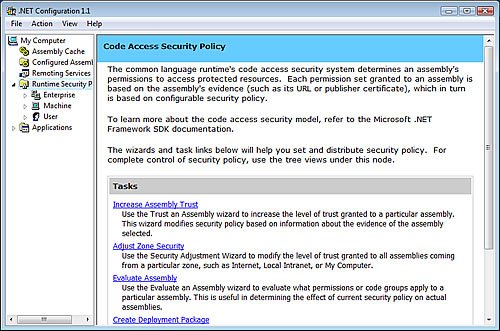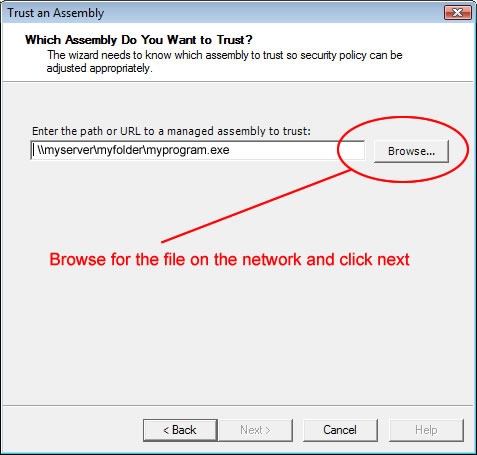
 | Microsoft .NET Application Crashes Over Network - Part 3 |
Have you just created a Microsoft .NET application in VB.NET or C# and deployed it to a customer. They install it over the network and all of a sudden, it crashes for no apparent reason and gives no hint as to why?
However, when you run the application locally or on a computer or the one that you developed it on, it works fine.
The thing to check first is the security policy of the .NET framework. The reason why there are 3 articles for something that shouldn't be an issue is that some operating systems, versions of operating systems and current administrative rights force you to do things different ways to accomplish the same goal. It is one of those things that once done ...
It just works!
Here is Part 3 of the article. Both Part 1 and 2 can be found here: Part1 Click Here and Part2 Click Here
However, when you run the application locally or on a computer or the one that you developed it on, it works fine.
The thing to check first is the security policy of the .NET framework. The reason why there are 3 articles for something that shouldn't be an issue is that some operating systems, versions of operating systems and current administrative rights force you to do things different ways to accomplish the same goal. It is one of those things that once done ...
It just works!
Here is Part 3 of the article. Both Part 1 and 2 can be found here: Part1 Click Here and Part2 Click Here
 |
Here is how to check it:
1. Go to "Start" -> "Settings" -> "Control Panel" -> "Administrative Tools"
2. Next Double-Click on ".NET Framework Wizard x.x Configuration" where x is the version #

2. Next, on the left side of the screen choose "Runtime Security Policy", then "Increase Assembly Trust"

3. A screen will now display asking you to "Which assembly do you want to trust?". Click the "Browse button to choose the executable file, and click "Next".

4. This will bring you to the following screen. From here, move that bar all the way up to "Full Trust". To finalize these changes, click "Next" and then "Finish"!

Try running the program and hopefully this fixed the problem!
Once again, this is the 3rd way to attack the same problem. The reason for this is because some computers (on some operating systems like Windows 7) are already logged on with non-Administrative privileges which for some reason forces you to do things differently then the first 2 parts of these articles
This type of problem can be found on Windows XP, Windows Vista, Windows 7 or Windows 2003, Windows 2008 Server (32 or 64 bit versions).